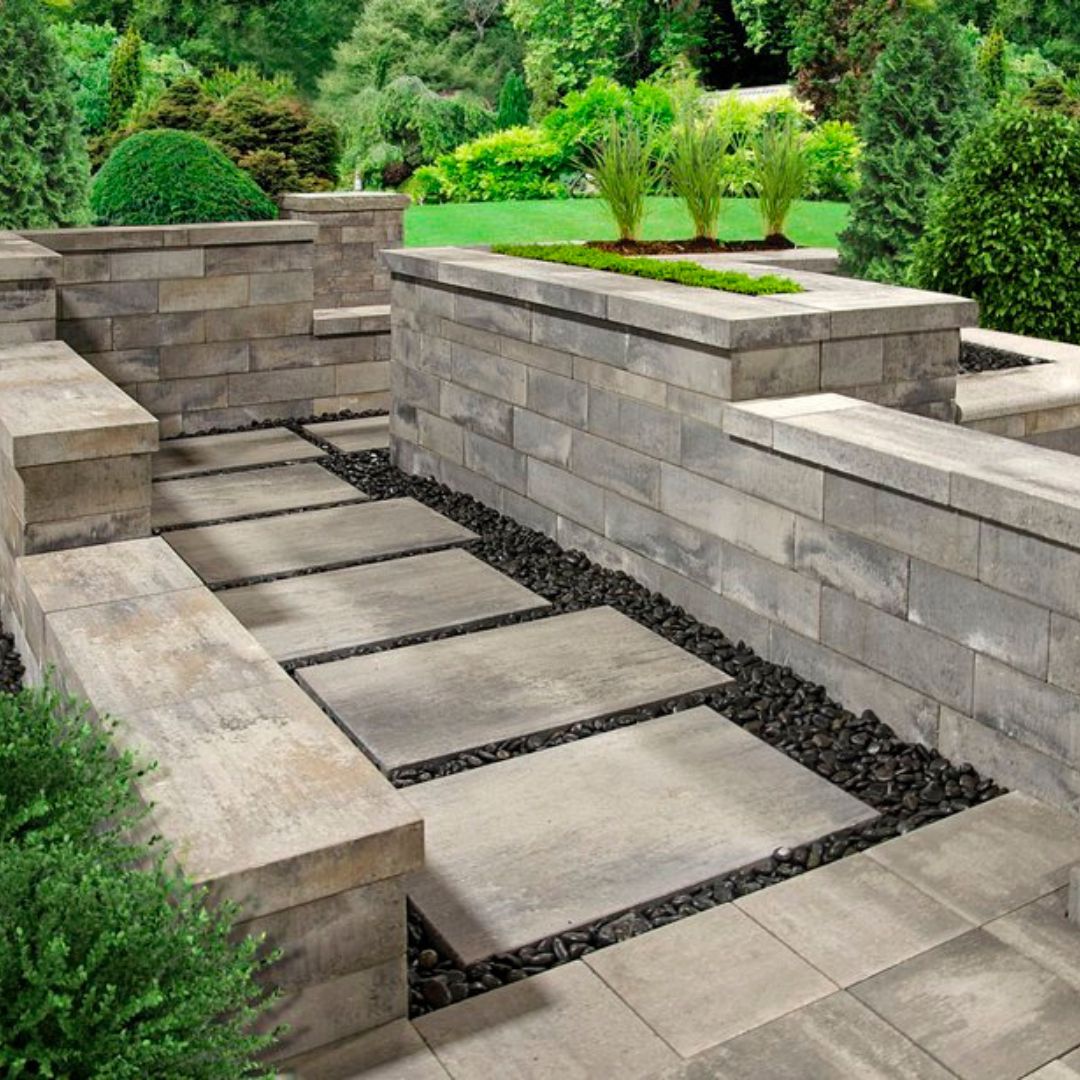Retaining walls are not just functional elements in landscaping; they can also be incredibly versatile and visually appealing. Here are some creative ways to incorporate retaining walls into your landscape design, adding both beauty and practicality to your outdoor space.
Terraced Gardens
Terraced gardens are an excellent way to make the most of a sloped yard. By using retaining walls to create flat, tiered planting areas, you can transform a steep incline into a series of beautiful, manageable garden beds. This not only maximizes your gardening space but also adds depth and dimension to your landscape.

Integrated Seating
Incorporate seating into your retaining wall design for a functional and stylish addition to your yard. Retaining walls can double as benches, providing a perfect spot to relax and enjoy your garden. This is especially effective around fire pits, patios, or along garden paths, creating inviting spaces for socializing and relaxation.

Raised Planters
Create stunning raised planters using retaining walls. These planters can be used to grow flowers, herbs, or even small trees, adding height and interest to your garden. Raised planters are also easier to maintain, reducing the need for bending and making gardening more accessible.

Outdoor Living Spaces
Define and enhance your outdoor living areas with retaining walls. Use them to create distinct zones within your yard, such as outdoor kitchens, dining areas, or lounges. Retaining walls can provide privacy, wind protection, and a sense of enclosure, making your outdoor spaces more comfortable and usable.

Water Features
Incorporate water features into your retaining wall design for a dramatic and soothing effect. Waterfalls, fountains, and ponds can be built into retaining walls, adding a dynamic element to your landscape. The sound of running water enhances the ambiance, creating a tranquil and relaxing environment.

Vertical Gardens
Transform retaining walls into living walls by incorporating vertical gardens. Plant pockets or trellises can be attached to the walls, allowing you to grow a variety of plants vertically. This not only saves space but also adds lush greenery and a unique focal point to your landscape.

Erosion Control
While retaining walls are often used for erosion control, they can be designed to look attractive as well. Use natural stone or decorative blocks to build walls that blend seamlessly with the surrounding landscape. This functional feature can prevent soil erosion while adding texture and interest to your garden.

Pathways and Steps
Integrate pathways and steps into your retaining wall design to create easy access throughout your garden. Steps built into retaining walls can make navigating slopes more manageable and visually appealing. Combining pathways with retaining walls helps create a cohesive and well-organized landscape design.

Artistic Designs
Don’t be afraid to get creative with the design of your retaining walls. Incorporate curves, varying heights, and different materials to create artistic and eye-catching structures. Use colorful plants, decorative stones, or mosaics to add personality and style to your walls.



